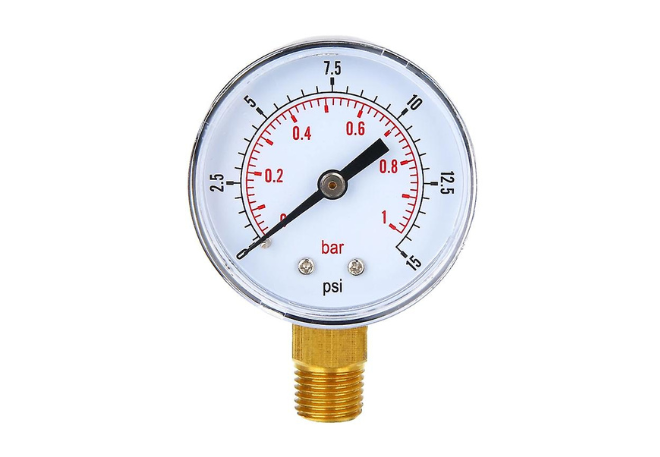Drops of Wisdom: The Modern-Day Guide to pH Probes
The study and measurement of pH is a delicate dance between acidity and alkalinity, a balance of nature that affects everything from our bodies' cellular processes to the health of the world's oceans. In the forefront of this dance is a small yet mighty tool: the pH probe. This instrument, which has undergone significant transformations over the decades, offers unparalleled insight into the chemical nature of various solutions. In this modern-day guide, we dive deep into the world of pH probes, shedding light on their evolution, significance, and future.
The Humble Beginnings of the pH Scale
To appreciate the journey of the pH probe, it's essential to
understand the origins of the pH scale itself. Introduced in 1909 by the Danish
chemist Søren Peder Lauritz Sørensen, the pH scale was a revolutionary concept
that provided a simple numeric way to represent the acidity or alkalinity of a
solution. The scale runs from 0 (most acidic) to 14 (most alkaline), with 7
being neutral.
However, as groundbreaking as the scale was, the initial
methods to measure pH were rudimentary, relying on specific indicators that
would change color at various pH levels. These indicators, though useful, were
not always precise and lacked the flexibility required for many scientific
applications.
The Rise of the pH Probe
By the mid-20th century, there was a pressing need for more
accurate, instantaneous, and versatile pH measuring methods. Enter the pH
probe, a device designed to offer real-time measurements by simply dipping it
into the solution in question.
A pH probe primarily consists of two electrodes: a reference
electrode and a glass electrode. The glass electrode, sensitive to hydrogen
ions, produces a voltage proportional to the pH level. The reference electrode
provides a stable voltage against which the glass electrode's voltage can be
compared. Together, they offer a detailed reading of a solution's pH.
The Modern-day Marvels of pH Probes
With advancements in technology and material science, today's pH probes boast features and capabilities unimaginable to earlier researchers:
- Miniaturization: Modern pH probes come in various sizes, including micro-probes that can measure pH in tiny volumes or at microscopic scales. This has opened the doors for intricate studies in cellular biology, where researchers can now measure the pH inside individual cells.
- Improved
Accuracy: Enhanced materials and refined calibration processes mean
that modern probes can measure pH with incredible accuracy, often within
0.01 pH units or better.
- Durability
and Longevity: Early pH probes were delicate and had a short lifespan.
Now, with robust construction materials and protective sheaths, some
probes can withstand harsh environments and last for years.
- Digital
Integration: Modern probes often come with digital interfaces,
allowing them to be easily connected to computers or digital readouts. This
facilitates data logging, analysis, and real-time monitoring.
Experience stability like never before! 📷 Introducing Anti-Vibration Mounts at Enrgtech. Ensuring your machines stay smooth & silent. 📷 Get yours today! https://t.co/ecSgZREVab#EnrgtechSolutions #SilentPerformance pic.twitter.com/ayGGYjHggr
— Joddie Marshall (@joddie_marshall) October 5, 2023
Significance in Diverse Fields
The applications of pH probes stretch far and wide:
- Medical
Research: Understanding the pH levels within our bodies can give
insights into various health conditions. For instance, the pH level in our
blood is crucial; even a slight deviation can lead to significant health
issues.
- Environmental
Studies: Monitoring the pH of natural water bodies can indicate
pollution levels and help assess the overall health of aquatic ecosystems.
- Food
and Beverage Industry: The taste, texture, and shelf-life of many food
products can be influenced by their pH. Probes play a crucial role in
quality control and product development in this sector.
- Agriculture:
Soil pH can significantly influence crop yield. By monitoring and
adjusting soil pH, farmers can ensure optimal conditions for their crops.
The Future of pH Probes
As we march into the future, the importance of pH probes is
only set to increase. With the challenges posed by climate change, pollution,
and increasing health concerns, there will be a rising demand for precise and
efficient pH monitoring. We can expect probes that are even more miniaturized,
perhaps integrated into wearable tech or implants that can offer continuous
monitoring of pH in real-time.
Conclusion
In conclusion, from its humble beginnings to its present-day
marvels, the pH probe stands as a testament to human ingenuity and our
persistent quest for knowledge. Like the tiny drops that collectively make the
vast oceans, each reading from a pH probe adds to our collective wisdom,
helping us navigate and thrive in an ever-complex world.




Comments
Post a Comment